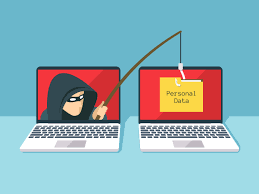A Beginner's Guide to Spotting Phishing Emails: Protecting Your Computer and Data
 Fabrice Innocent
Fabrice Innocent
In today's digital age, email is an integral part of our lives. It's a convenient way to communicate, but it can also be a breeding ground for cybercriminals who use phishing emails to compromise your computer and steal your sensitive information. If you're new to the world of cybersecurity, this guide will help you understand various types of phishing email tactics and how to recognize and avoid falling for them.
What is Phishing?
Phishing is a form of cyberattack where malicious actors attempt to deceive individuals into revealing their personal information, such as login credentials, financial data, or sensitive personal details. They typically disguise themselves as trustworthy entities or friends to trick you into taking actions that compromise your security.
Common Phishing Email Tactics
Generic Scam Emails:
Often, phishing emails appear to be from reputable organizations like banks, government agencies, or popular online services.
Be cautious of generic greetings, poor grammar, and unusual requests. Legitimate organizations use your name and maintain professional communication.
Spoofed Emails:
- Cybercriminals can forge the "From" address to make it look like the email is from a trusted source. Always verify the sender's email address.
Urgent or Threatening Language:
Phishing emails often create a sense of urgency or fear, compelling you to take quick action.
Pause and think before clicking on links or sharing personal information, especially if the message seems overly alarming.
Embedded Links:
Hover your cursor over links without clicking to see where they lead. Legitimate links should match the sender's domain.
Always be cautious with shortened URLs or unfamiliar web addresses.
Attachments and Downloads:
Don't open attachments or download files from unknown sources. These can contain malware or viruses.
Verify the sender and the necessity of the attachment before taking any action.
Request for Sensitive Information:
- Legitimate organizations do not ask for sensitive information via email. Never share your password, social security number, or credit card details through email.
Check the URL:
- When asked to log in or enter information, double-check the website's URL. Phishers often create look-alike sites with slight misspellings or alterations.
Beware of Pop-Ups:
Some phishing emails include fake pop-up windows that prompt you to enter login credentials.
Close these pop-ups and navigate directly to the website instead.
Verify with Official Sources:
- If you're unsure about an email's legitimacy, contact the organization or person using official contact information from their website or directory.
Protecting Yourself from Phishing
Enable Two-Factor Authentication (2FA): This adds an extra layer of security, making it harder for attackers to gain access to your accounts.
Keep Software Updated: Regularly update your operating system, browsers, and antivirus software to patch security vulnerabilities.
Educate Yourself: Continue to learn about phishing techniques and stay informed about the latest scams.
Use a Reliable Antivirus Software: Install trusted antivirus software that can help detect and block phishing threats.
Trust Your Instincts: If something seems suspicious, trust your gut and verify before taking any action.
In conclusion, being aware of phishing email tactics and following best practices can help you protect your computer and personal information from cybercriminals. Stay vigilant, keep learning, and remember that caution is your best defense against phishing attacks.
Subscribe to my newsletter
Read articles from Fabrice Innocent directly inside your inbox. Subscribe to the newsletter, and don't miss out.
Written by
